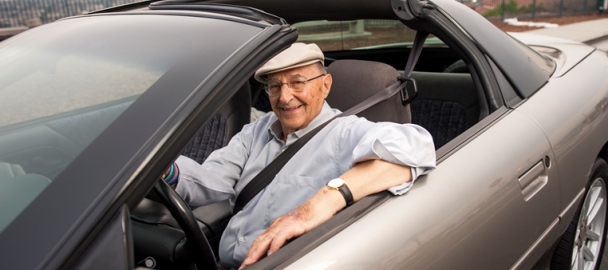
At 92-years-old Bernard Kessler has a lot of “heart.” Born and raised in Brooklyn, he was never the type of man to sit back and wait for things to happen. In 1943, 19-year-old Bernard entered in the military, serving in both World War II and the Korean War before moving to California in 1952. After his military service he studied at the University of Southern California where he discovered his entrepreneurial spirit and sparked an interest in international business. For a man like Bernard, who was always on the move, it was hard to imagine that anything could stop him.
Bernard began having coronary artery disease issues in 1978. Coronary artery disease is the result of plaque buildup in the inner walls of the arteries of the heart. The plaque blocks blood flow and makes it more difficult for the body to receive the necessary amount of blood flow to the heart. The most common symptom of coronary artery disease is angina, or chest pain.
Shortly after discovering this, Bernard quit smoking and made healthier lifestyle choices to keep his heart problems at bay, but it was too late. Two years later he would have his first heart bypass. While this surgery helped him win the battle against his heart problems, the war was far from over.
Eighteen years later, Bernard began experiencing chest pain again along with other symptoms. In 1998 his cardiologist recommended a new laser bypass procedure used to treat inoperable heart disease in people with persistent chest pain. Again, the procedure helped, but it would only be a temporary fix.
Bernard continued, going to work and traveling when he could for both business and pleasure. He began to notice new symptoms throughout the years, such as not being able to breathe in cold air when he would travel to the east coast. In 2010 when Bernard’s long-time cardiologist retired he recommended Henry Van Gieson, M.D. medical director, cardiac care unit, MemorialCare Heart & Vascular Institute at Long Beach Medical Center. Bernard decided to accept this advice and transferred his care to Dr. Van Gieson.
After familiarizing himself with Bernard, Dr. Van Gieson suggested placing stents in his arteries to recover blood flow. A stent is a tube placed in the coronary arteries that keeps them open providing an adequate space for blood to flow into the heart. Bernard was all in, but it was soon discovered that Bernard had Coronary Artery Chronic Total Occlusion (CTO) – complete blockage of a coronary artery caused by a heavy buildup of plaque within the artery over the course of many years.
With the technology and medical equipment at the time stents could not be utilized because there was no channel through which stents could be placed through the total chronic occlusion. Repeat bypass surgery was Bernard’s only other option, which he was reluctant to consider. Both Bernard and Dr. Van Gieson decided to wait until either his condition became worse or an alternative procedure became available.
With recent advancements in cardiovascular procedures, the time to revisit the problem came in 2014. The onset of severe angina made it necessary for Bernard to have something done. Around the same time, Dr. Van Gieson learned about a new technique called CTO coronary intervention. CTO coronary intervention is a novel angioplasty technique for opening occluded (blocked) coronary arteries which could previously not be treated with stents. After careful consideration, Bernard agreed to undergo the new procedure at Long Beach Medical Center. The procedure was successful in opening Bernard’s coronary artery which had been totally blocked for more than 20 years.
“The whole experience was remarkable,” says Bernard. “I was in and out of the hospital in one day.”
After the quick procedure and recovery time Bernard was on his way to feeling better. With every passing day he was noticing that he was able to do more and more things, but after years of coping with his symptoms he was still adjusting to his fixed heart.
During his first trip back to the east coast after his procedure, Bernard found himself out in the cold unexpectedly. He panicked at first, but soon realized that he wasn’t experiencing the discomfort he usually did. Slowly but surely, he took deeper and deeper breaths of the cold air and felt no pain.
“It was right then I realized what the stents had done,” says Bernard. “There is a night and day difference between how I used to live and how I live now. I can’t say enough about how much my life has improved.”